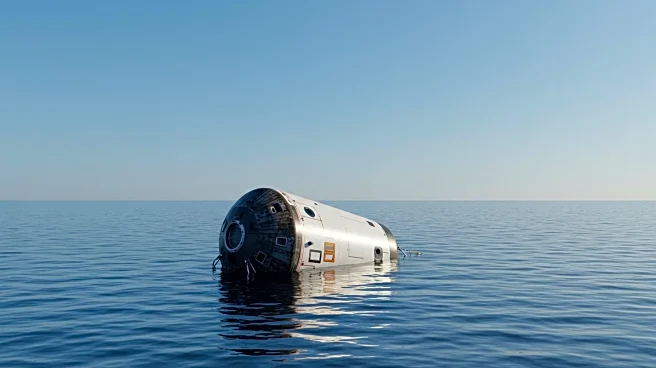What's Happening?
NASA and SpaceX's Crew-10 mission has successfully concluded with the astronauts returning to Earth after a five-month stay on the International Space Station (ISS). The mission involved astronauts from NASA, Roscosmos, and JAXA conducting experiments on material flammability, pharmaceutical production, lunar navigation systems, and plant growth in microgravity. The crew's return marks the transition to Crew-11, who will continue research objectives as NASA prepares for future moon and Mars missions.
Why It's Important?
The successful completion of Crew-10 underscores the importance of international collaboration in space exploration. The experiments conducted during the mission contribute to advancements in space technology and human health, essential for long-duration missions. The mission supports NASA's goals of maintaining a continuous human presence on the ISS and advancing research for future lunar and Martian exploration. The reliance on SpaceX's transportation systems highlights the role of commercial partnerships in achieving these objectives.
What's Next?
Crew-11 will build upon Crew-10's findings, focusing on astronaut physiology and simulated moon landings. NASA continues to rely on SpaceX for ISS crew transportation while addressing technical challenges with Boeing's Starliner. Future missions will aim to enhance re-entry comfort and develop systems for lunar landings. NASA's ongoing research and partnerships are crucial for the success of its exploration programs, including the Artemis missions and potential Mars expeditions.











